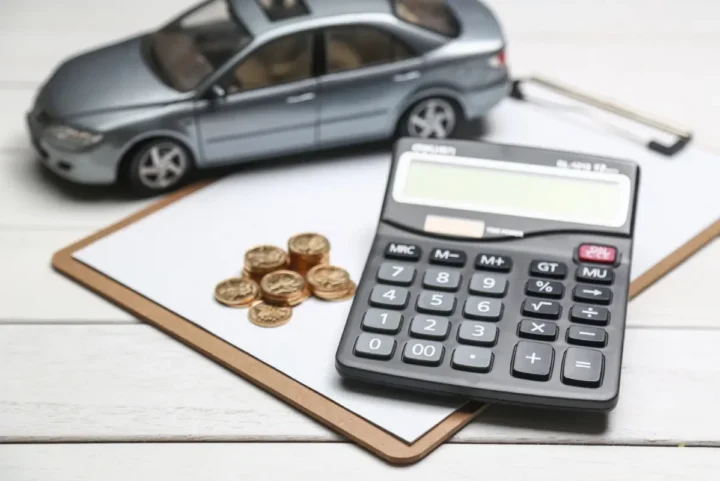Creative Ways to Lower Your Monthly Car Payments
Car payments often represent one of the most substantial fixed expenses in a household budget, directly affecting financial flexibility. Reducing this monthly cost can significantly ease financial stress and support long-term goals.
One of the most effective strategies is refinancing your auto loan through a refinance company for cars, such as iLending, which specializes in helping borrowers secure better interest rates and terms that align with their current financial situation. A proactive approach like this can lead to lower monthly payments and improved economic stability.
Beyond refinancing, there are other practical methods to consider. Making a larger down payment on your next vehicle, improving your credit profile, or exploring leasing as an alternative can each contribute to reduced costs. Every option has benefits and considerations, so evaluating what fits best with your lifestyle and budget is essential.
With some research and careful planning, you can reduce your monthly car expenses without sacrificing the convenience and freedom your vehicle provides, giving you more room to breathe financially while keeping reliable transportation within reach.

Refinance Your Car Loan
Refinancing is among the most powerful tools for lowering monthly car payments. You can immediately cut down on your current monthly payment by taking out a new loan—often with a lower interest rate or a more favorable repayment schedule—to replace your existing car loan. This approach is especially beneficial if your credit score has improved since you originally bought the car or market rates have dropped.
According to Bankrate, refinancing can offer instant relief to your budget by lowering the payment itself, shortening your loan term to help you pay off the loan faster, or both. It’s essential to compare offers from several lenders, including dedicated refinancing services, to help you secure terms best suited for your financial capabilities. Before pursuing refinancing, always review the terms and potential fees to ensure the new loan saves you money in the long run.
Make a Larger Down Payment
When purchasing a new or used vehicle, the size of your down payment can significantly affect your future car payments. Contributing a larger sum upfront directly decreases the principal amount you need to finance, which not only reduces your monthly bill but can also help you qualify for a better interest rate. Financial experts recommend putting down at least 20% of the vehicle’s price.
According to Experian, this strategy yields more manageable monthly charges. It may also safeguard you against owing more than your car is worth, known as being “upside down” on your loan. By increasing your down payment, you gain instant equity in your vehicle while also positioning yourself for more favorable loan terms or promotions available from lenders or dealerships.
Extend Your Loan Term
Another strategy for lowering your car payments in the short term is to extend your loan term. By spreading your remaining loan amount over more months, your payments become smaller and may fit much better within your current budget. For those seeking immediate financial relief, this can be a welcome change.
However, there are significant trade-offs to consider: stretching out the loan will usually increase the total interest you pay over time, raising the overall cost of your vehicle. As Car and Driver advises, you should weigh the benefits of lower monthly payments against the risk of paying more in the long haul, ensuring that the shade of relief now does not create greater financial pressure.
Improve Your Credit Score
Your credit score is one of the most critical variables auto lenders evaluate when setting your loan’s interest rate and terms. A higher credit score typically translates into lower monthly payments, indicating to lenders that you’re a less risky borrower. Before applying for a new car loan or refinancing, improve your score by paying bills on time, reducing overall debt balances, and refraining from applying for too much new credit at once.
Monitoring your credit report for errors and disputing inaccuracies is also essential. GOBankingRates reports that just a few months of diligent effort in improving your credit standing could help you qualify for significantly better rates and terms, substantially impacting your monthly car payment amount.
Consider Leasing Instead of Buying
Leasing offers a unique way to keep monthly vehicle payments low, particularly for those who want a new car every few years and aren’t committed to long-term ownership. Lease payments typically cost less than loan payments on the exact vehicle because you only pay for the period you use the car and its anticipated depreciation during the lease term.
However, leases come with mileage restrictions, potential excess wear charges, and the fact that you will never own the vehicle outright unless you purchase it at the lease’s end. As highlighted by LendingTree, leasing is best for drivers who want predictable, manageable payments without a long-term investment.
Still, weighing its limitations and commitments is crucial before deciding if this option fits your financial goals and lifestyle needs.
Trade In Your Current Vehicle
Trading in your existing vehicle when you purchase a new one can directly and immediately affect your new car loan or payment structure. The trade-in value of your old car is applied directly as a down payment, reducing the amount you need to finance and therefore your monthly payment. To maximize your benefit, research your vehicle’s fair market value using resources such as Kelley Blue Book or Edmunds, and be prepared to negotiate this value with the dealer.
According to Bankrate, trading in your vehicle streamlines transitioning to a new car. It strengthens your position as a buyer, potentially freeing up more cash up front and making your new car purchase much more affordable each month.
Shop Around for the Best Loan Rates
Don’t settle for the first loan offer you receive. Shopping around and comparing quotes from various lenders—including banks, credit unions, and online finance companies—can help uncover deals that significantly reduce your monthly payment. Lenders may provide incentives, special promotions, or more flexible loan terms based on your creditworthiness, the time of year, or even your loyalty as a previous customer.
Comparing terms and negotiating with lenders can often lead to finding a loan offering lower payments and manageable long-term costs. GOBankingRates suggests that investing the time to research and negotiate can ensure you lock in the best possible loan for your purchase or refinance process.
Make Extra Payments When Possible
If your car loan allows it, making extra payments toward your loan principal—much like making additional payments on a mortgage—can drastically reduce the duration of your loan and lower your total interest costs. Even occasional or minor extra fees can make a substantial difference, allowing you to pay off your debt faster and even reduce your monthly payment through an adjusted loan schedule.
Before proceeding, always check with your lender to confirm there are no prepayment penalties, which could offset your savings. As reported by LendingTree, proactively paying more when possible can offer you flexibility, such as skipping a payment in the future or paying off your vehicle early, giving you greater control over your budget and financial health.
By leveraging these practical strategies for managing your auto debt, increasing your down payment, improving your credit score, shopping for the best rates, or carefully considering lease or trade-in options, you can make your car payments significantly more manageable. With the right plan and a little diligence, you’ll be able to reduce your monthly expenses and enjoy improved financial stability, all while keeping the keys to the transportation you rely on daily.


